Gliclazide + Metformin + Pioglitazone
Uses
How Gliclazide, Pioglitazone, and Metformin Work Gliclazide, Pioglitazone, and Metformin is a combination of three antidiabetic medications: Gliclazide, Pioglitazone, and Metformin. They work through different mechanisms to provide better control of blood sugar when single or dual therapy is not effective. Gliclazide is a sulfonylurea that increases the amount of insulin released by the pancreas to lower blood glucose levels. Pioglitazone is a thiazolidinedione that enhances insulin sensitivity. Metformin is a biguanide that lowers glucose production in the liver, delays glucose absorption from the intestines, and further increases the body's sensitivity to insulin.
How it Works
Common side effects of Gliclazide, Pioglitazone, and Metformin include hypoglycemia (low blood glucose level), nausea, diarrhea, headache, edema (swelling), anemia (low number of red blood cells), upper respiratory tract infection, dizziness, vomiting, flatulence, and bronchitis (inflammation of the airways).
Expert Advice
- Take it with food to reduce the likelihood of an upset stomach.
- It may cause hypoglycemia (low blood sugar levels) when used with other antidiabetic medications, alcohol, or if you delay or miss a meal.
- Always carry some sugary food or fruit juice with you in case you experience hypoglycemic symptoms, such as:
- Cold sweats
- Cool, pale skin
- Tremors
- Anxiety
- Your doctor may monitor your liver function regularly.
- Inform your doctor if you develop symptoms such as:
- Abdominal pain
- Loss of appetite
- Yellowing of the eyes or skin (jaundice)
Related Medications
Gliclazide 60mg + Metformin 500mg + Pioglitazone 15mg

₹149

₹131.9
MRP ₹158.9
Gliclazide 60mg + Metformin 500mg + Pioglitazone 15mg

₹216.5

₹79.9
MRP ₹145.3
Gliclazide 30mg + Metformin 500mg + Pioglitazone 15mg

₹143.4

₹68
MRP ₹117.2
Gliclazide 30mg + Metformin 500mg + Pioglitazone 15mg
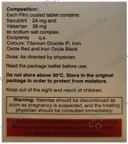
₹186.8

₹68
MRP ₹117.2
Gliclazide 80mg + Metformin 500mg + Pioglitazone 15mg

₹157.5
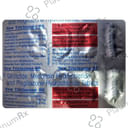
₹129.2
MRP ₹157.5
Gliclazide 30mg + Metformin 500mg + Pioglitazone 15mg

₹90

₹68
MRP ₹117.2
Gliclazide 30mg + Metformin 500mg + Pioglitazone 15mg
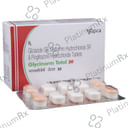
₹96.1

₹68
MRP ₹117.2
Gliclazide 60mg + Metformin 500mg + Pioglitazone 15mg

₹79.9
MRP ₹145.3
Gliclazide 60mg + Metformin 500mg + Pioglitazone 15mg
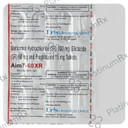
₹209.9

₹79.9
MRP ₹145.3
Gliclazide 60mg + Metformin 500mg + Pioglitazone 15mg

₹120

₹79.9
MRP ₹145.3
Gliclazide 60mg + Metformin 500mg + Pioglitazone 15mg

₹130

₹79.9
MRP ₹145.3
Gliclazide 60mg + Metformin 500mg + Pioglitazone 15mg
₹130

₹79.9
MRP ₹145.3
Gliclazide 60mg + Metformin 500mg + Pioglitazone 15mg
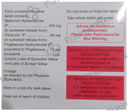
₹242.9

₹79.9
MRP ₹145.3
Gliclazide 60mg + Metformin 500mg + Pioglitazone 15mg

₹109.9

₹79.9
MRP ₹145.3
Gliclazide 60mg + Metformin 500mg + Pioglitazone 15mg

₹103

₹79.9
MRP ₹145.3
Gliclazide 60mg + Metformin 500mg + Pioglitazone 15mg

₹131.9
MRP ₹158.9
Gliclazide 60mg + Metformin 500mg + Pioglitazone 15mg

₹2,269.7
MRP ₹3,026.3
Gliclazide 30mg + Metformin 500mg + Pioglitazone 15mg

₹143.4

₹68
MRP ₹117.2
Gliclazide 60mg + Metformin 500mg + Pioglitazone 15mg

₹97

₹131.9
MRP ₹158.9
Gliclazide 60mg + Metformin 500mg + Pioglitazone 15mg
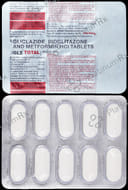
₹119.1

₹131.9
MRP ₹158.9
Gliclazide 40mg + Metformin 500mg + Pioglitazone 15mg

₹83
Gliclazide 40mg + Metformin 500mg + Pioglitazone 15mg

₹84
Gliclazide 60mg + Metformin 500mg + Pioglitazone 7.5mg

MRP ₹99
Gliclazide 30mg + Metformin 500mg + Pioglitazone 7.5mg

MRP ₹96.8
Gliclazide 30mg + Metformin 500mg + Pioglitazone 7.5mg

MRP ₹71.4